Art World
What I’m Looking At: Nude Dudes Doing the Laocoön at O’Flaherty’s, the Plot to Incept Capitalist Realism, and Other Stuff at the Edge of Art
Highlights from New York galleries from the last few weeks.
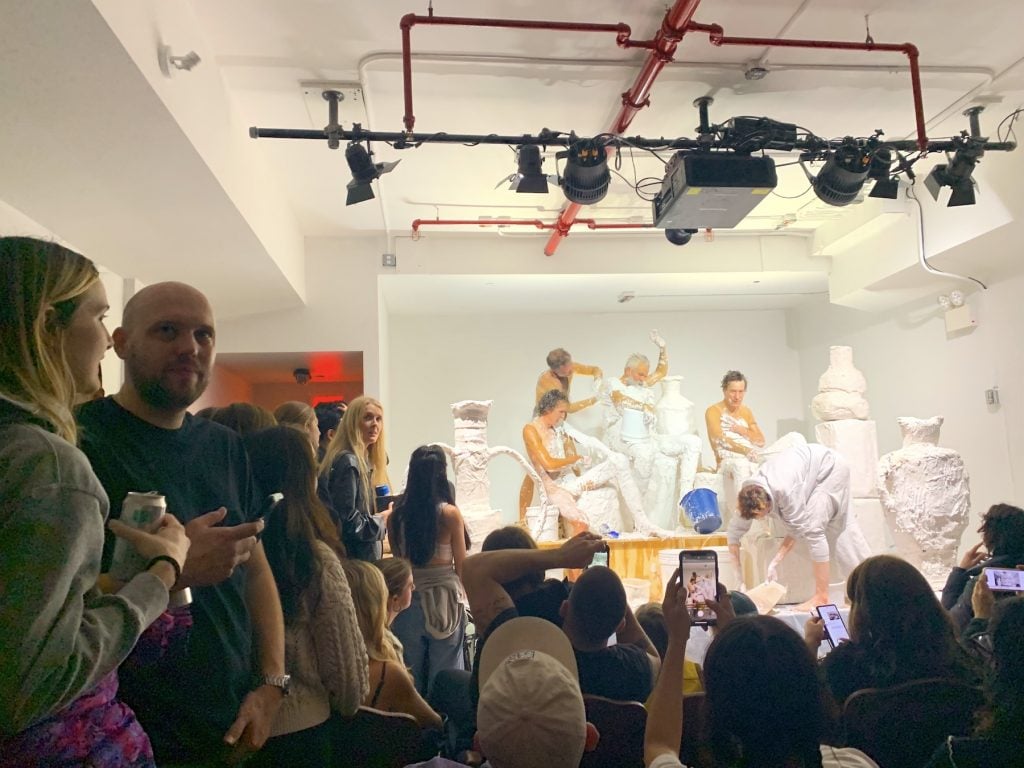
Highlights from New York galleries from the last few weeks.

Ben Davis

Here’s my round-up of things I saw or read that were new or notable in the last few weeks.
This column is just a kind of diary and catalogue of stray thoughts that don’t fit elsewhere, more than anything else. However, if I had to step back and say something about an overall theme, I would say this: the art that hit me in February is pretty determinedly minor, focusing on really specific, wonky pleasures. The writings that caught my attention, on the flip side, were all arguments about history, specifically trying to get some context on why the cultural present feels so fraught and difficult to navigate.
And if I had to really scrutinize my own tastes, I’d probably say that these two halves are linked, that the appeal of a kind of easygoing aestheticism is a reaction to what Anton Jäger calls (in the essay I cite below) the “hyperpolitical” mood of the recent past. That may be overthinking things, though.
In any case, here are some things that caught my eye, in the galleries and in writing.
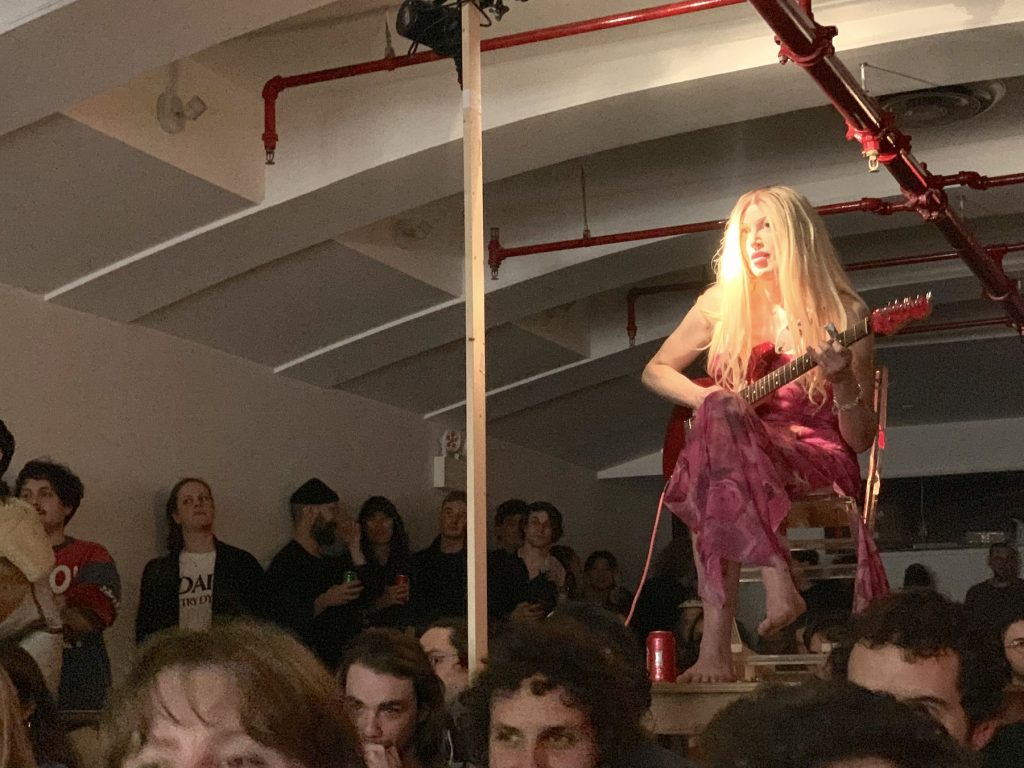
The gentle sounds of the guitar accompanied Gelitin at O’Flaherty’s. Photo by Ben Davis.
I was at the debut night of Jamian Juliano-Villani’s new venue for O’Flaherty’s, which kicked off with a performance series by the great Viennese art collective Gelitin.
I actually somehow didn’t know when I showed up that I was in for a two-hour performance, and just managed to get a seat by pure luck before the whole place filled up. It was hot and disgusting and pretty fun, with people standing in the aisles and beer being passed through the crowd because no one could get to the cooler.
As for what the occasion actually was (besides a scene): the Gelitin boys stripped bare, covered themselves with Vaseline, then slowly applied plaster casts to their bodies. When they began winding a giant flabby pink tube around themselves it became clear that they were doing something like a rough, living-sculpture approximation of the Laocoön.
I have a pet peeve that if you are going to do a two-hour art performance it should actually have some kind of beat or moment where it, you know, ends, which this did not. But the evening was just as much about the pleasure of sitting around with a big group of people, listening to guitar music, chatting with your neighbors, and guessing about where it was heading. It’s a journey-is-the-destination aesthetic.
The Verdict: Messy, fun, funny, the most nutsacks you could see in an art venue this month outside of the actual Greek and Roman galleries of the Met.
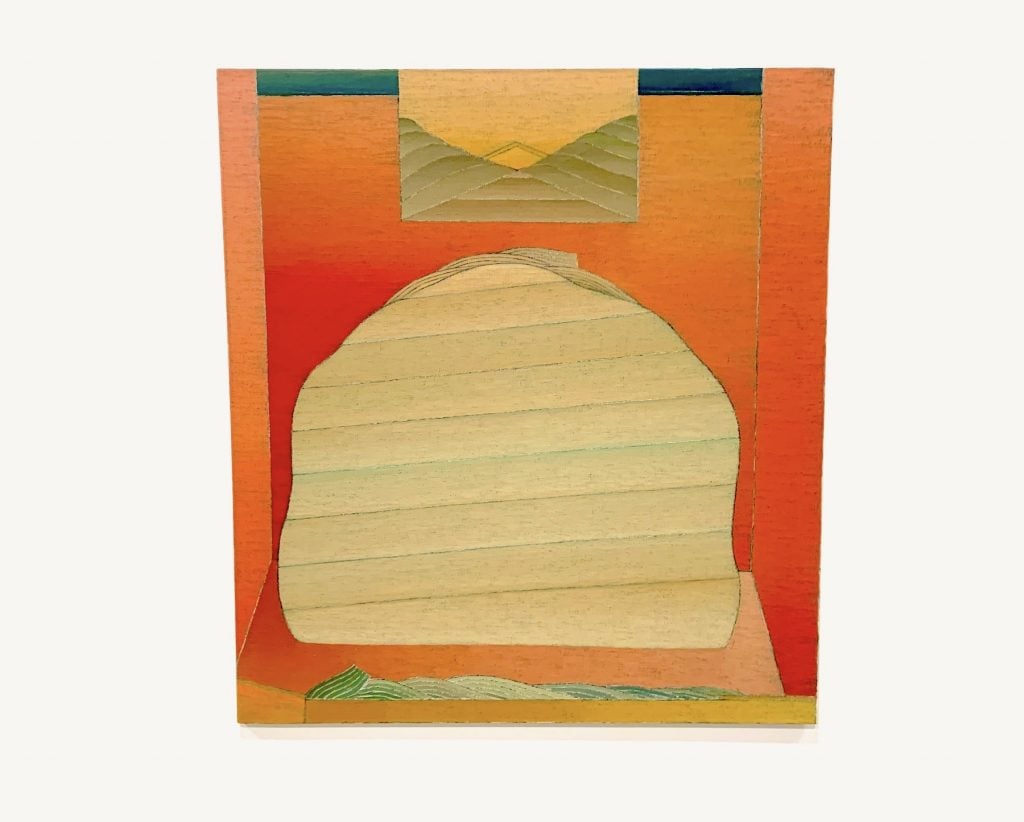
Miyoto Ito, Untitled (1970). Photo by Ben Davis.
To be honest, I like all three Marks shows that are up right now: the funny Leidy Churchman monotypes—specifically, the giraffes and airplane windows—are pretty delightful, and Paul Sietsema’s trompe-l’œil paintings and invented Picasso posters have a brainy glamor.
As for Ito (1918–1983), I can’t quite think of another painter like her. She has long been a key figure in the extended universe of Chicago Imagism and has recently gained greater and greater retrospective stature. Here, the sherbet-y abstract paintings from the 1970s read as tranquil and self-contained while also being restless machines for suggesting new images—landscapes, microscopic worlds, interiors, creatures, and so on.
The Verdict: Paintings with such a gentle and assured sense of self that it feels renewing just to be in their presence.
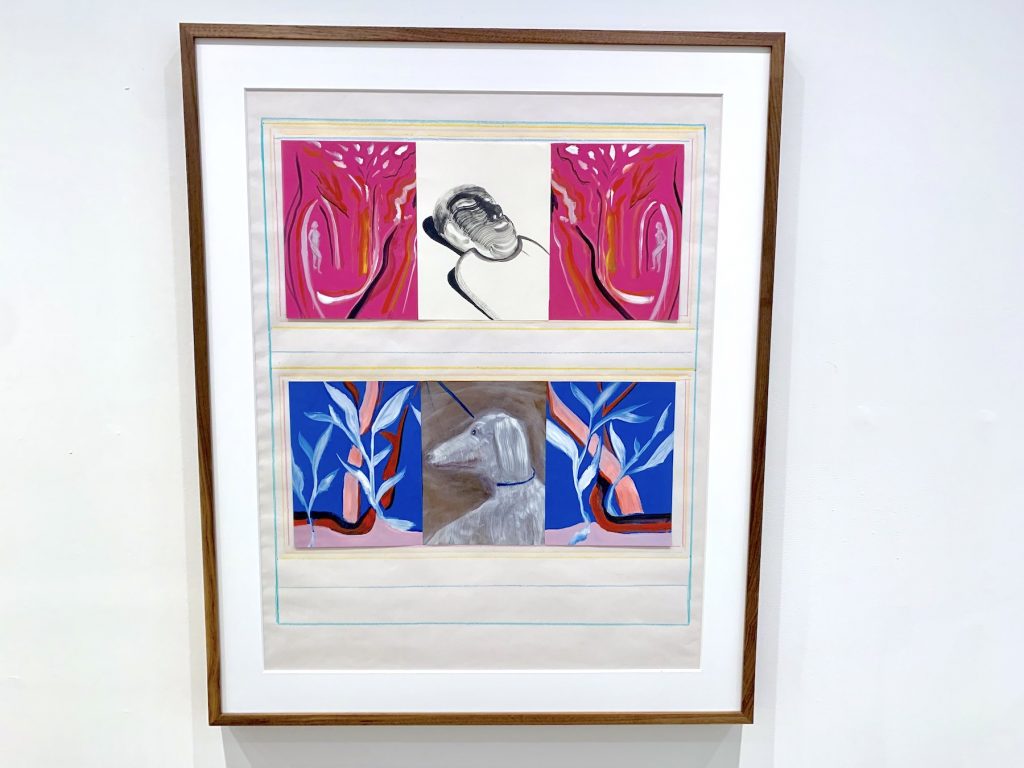
Works from Mark van Yetter, “The Politics of Charm.” Photo by Ben Davis.
Mark van Yetter at Bridget Donohue
This show presents a cycle of paintings in the relatable, minor style that has been the fashion for a while now, full of wonky, sometimes cartoon-y imagery that’s sometimes dryly funny (e.g. the image of two women sporting rifles opposite the image of a man serenely peeing into a rowboat). To this, Van Yetter adds this other element: each individual work in this 20-part series is divided into six panels, the offbeat images repeating and mirroring each other in mysterious ways. The enigmatic antics of his imagery sit within this mysterious sense of order, the two elements setting each other off like bacon bits in chocolate.
The Verdict: A very likable and successful exercise in Slacker Surrealism.
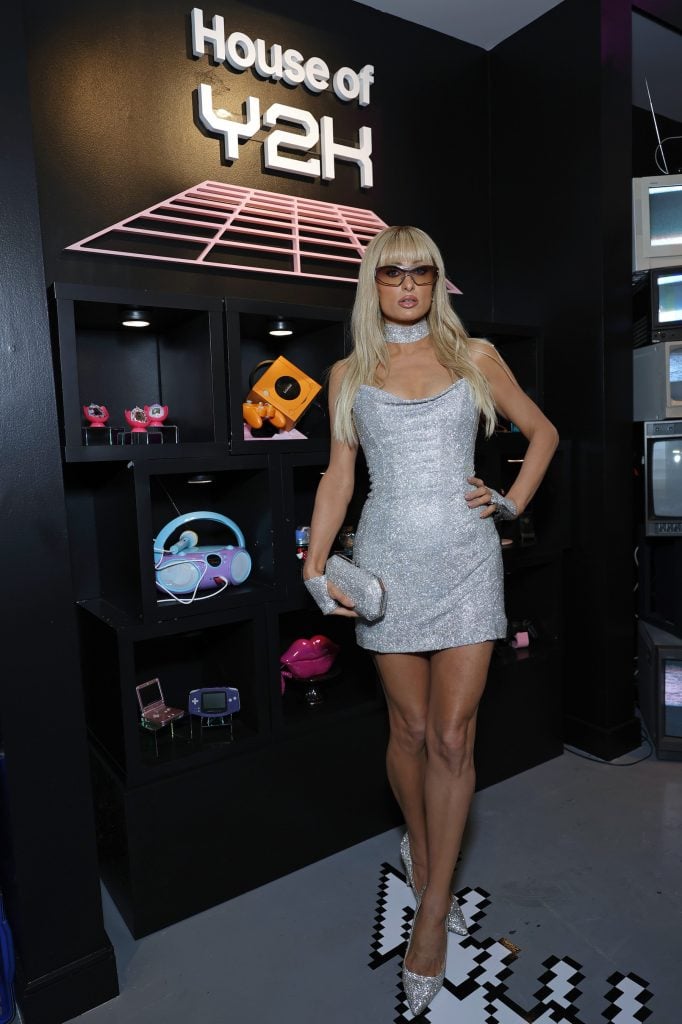
The current Y2K wave: Paris Hilton attends the Klarna and Paris Hilton House of Y2K Launch Party on February 23, 2023 in Los Angeles, California. (Photo by Jon Kopaloff/Getty Images for Klarna)
“Chains or Whips: The Cruel Decade and Its Aftermath” by Kristian Vistrup Madsen, The White Review
A serious intervention into the current vortex of Y2K nostalgia. Basically, Madsen argues you can’t really understand the banalized, touchy-feely aesthetics of the last years without understanding the callousness and media spectacle that provided the formative experiences those aesthetics are reacting against. “The impersonality of the ’00s, its complete denial of identity, meant that by 2012 the only thing worth having was ‘skin in the game,’ feminist situatedness, and auto-everything.”
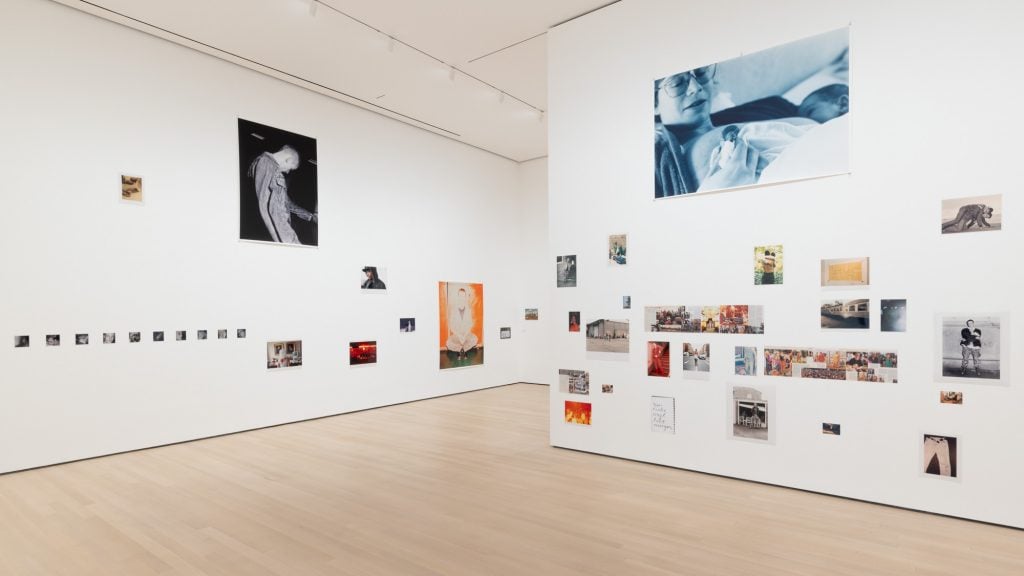
Installation view of “Wolfgang Tillmans: To look without fear,” on view at The Museum of Modern Art, New York from September 12, 2022 – January 1, 2023. Photo: Emile Askey.
“Everything Is Hyperpolitical” by Anton Jäger, The Point
A slightly different attempt to explain the present as a symptom of the recent past: Passing through the rave photos of Wolfgang Tillmans and the novels of Annie Ernaux, Jäger sees the key to the present in the post-politics and the “end of history” era of the 1990s, and the vaporization of any idea of major system change.
Instead of turning the page on that period, Jäger sees the agitated online micro-politics of the recent past as inheriting the collapse of political engagement into lifestyle—by making controversy universal, a constant “hyperpolitical” excitation also neutralizes the ability of political action to unite around any coherent target. “Hyperpolitics,” Jäger writes, “comes and goes, like a neutron bomb that shakes the people in the frame but leaves all the infrastructure intact—an awkward synonym rather than an antonym to post-politics.”
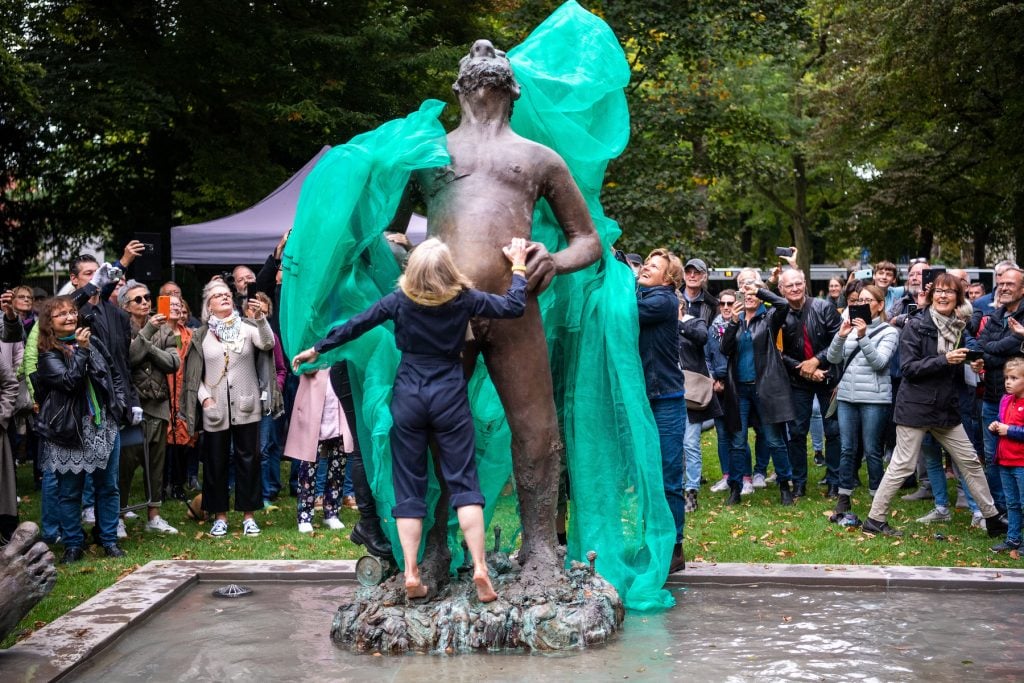
Part of the Nicole Eisenman’s “Sketch for a Fountain” is unveiled. Photo: Lino Mirgeler/dpa (Photo by Lino Mirgeler/picture alliance via Getty Images)
“How Do Criteria Change?” by Sarah Schulman, Artforum
I could imagine a criticism of Jäger’s argument as being that he overstates the opposition between “lifestyle” and “real” systematic politics, at a time of a barrage of attacks on queer and trans people at the government level. So it’s worth finally complementing “Everything Is Hyperpolitical” with this, from the February Artforum.
Ostensibly, it’s about star contemporary painter Nicole Eisenman, an artist who definitely does not want for coverage in Artforum. But this one is by Sarah Schulman, author of the incredible recent book Let the Record Show: A Political History of ACT UP New York, 1987–1993, and unexpectedly is actually about something bigger as well: how the mainstream success of Eisenman’s openly queer, witty work secretly and not-so-secretly is made possible by a whole history of queer political organizing in the ’90s that was very much sustained and systematic.
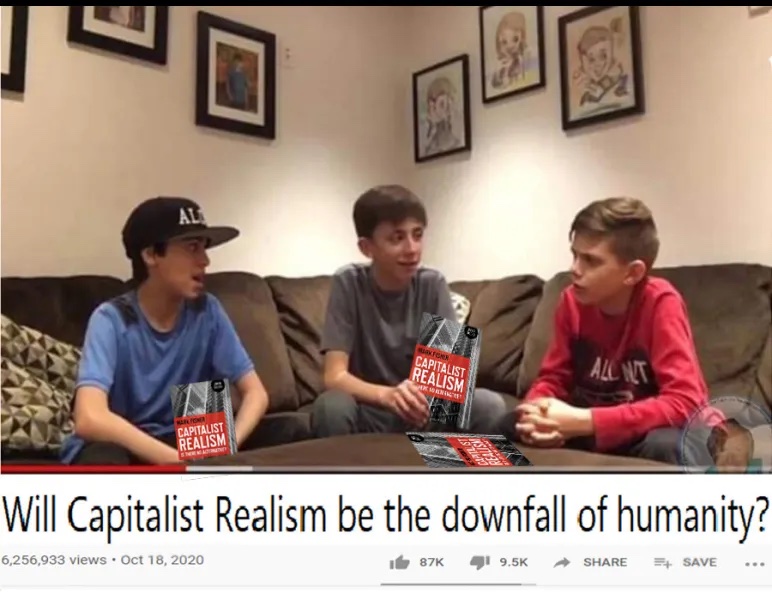
“Capitalist Realism” meme.
Joshua Citarella’s “Capitalist Realist Memes (Yes, All of Them)“
One of the things I have been most interested in lately is the artist Joshua Citarella’s experiments with the inception of ideas into online communities. The most famous instance is his year-and-a-half-long quest to seed memes about theorist Mark Fisher’s radical tome Capitalist Realism into very-online life, an initiative that makes for an instructive case study in what it might take to change minds in the hall-of-mirrors that culture has become.
That particular initiative also produced a ton of weird Mark Fisher-themed imagery, all of which have just been catalogued in a post on Citarella’s Substack. Check it out—though you’re gonna want to read about the history of the project (or listen this podcast) if you want to get a grip on what is going on.